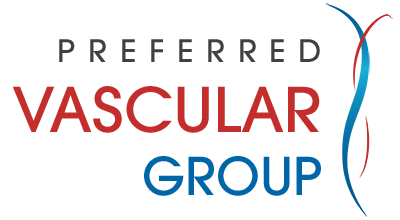What’s the Difference Between Venous Disease and PAD?
Vascular health is vital to overall well-being, yet many people confuse two common but distinct conditions: venous disease and peripheral artery disease (PAD). While both involve blood vessels in the legs, they affect different parts of the circulatory system and require very different treatment approaches.
Understanding the difference is essential for patients, primary care providers, and the public to recognize symptoms correctly and seek appropriate care. This article from Preferred Vascular Group explains how venous disease and PAD differ, including causes, symptoms, diagnostic tools such as vascular imaging, and treatment paths like endovascular therapy.
What Is Venous Disease?
Venous disease refers to conditions affecting the veins — the blood vessels that return blood from the legs back to the heart. When veins fail to function properly, blood can pool in the legs, causing discomfort and swelling.
Common forms of venous disease include:
- Varicose veins – enlarged, twisted veins visible under the skin.
- Chronic venous insufficiency (CVI) – damaged vein valves leading to swelling, heaviness, and skin changes.
- Venous ulcers – open sores that may develop after long-term venous insufficiency.
Venous disease is most often caused by valve dysfunction inside the veins, which allows blood to flow backward and pool in the legs.
What Is Peripheral Artery Disease (PAD)?
PAD affects the arteries — the vessels that carry oxygen-rich blood from the heart to the legs and feet. PAD develops when arteries narrow or become blocked due to plaque buildup (atherosclerosis), reducing blood flow to the limbs.
Patients with PAD may experience:
- Pain or cramping in the legs during walking, known as claudication.
- Coldness, numbness, or color changes in the legs or feet.
- Wounds or ulcers that do not heal.
- In severe cases, tissue loss or gangrene from inadequate oxygen supply.
Importantly, PAD is a marker of systemic vascular disease and is linked with an increased risk of heart attack and stroke.
How to Tell Venous Disease and PAD Apart
While both conditions affect the legs and can cause discomfort, the differences lie in the vessels affected and the type of symptoms:
- Venous disease affects the veins. Symptoms often include swelling, aching, heaviness, skin changes, and visible varicose veins. Pain typically worsens with standing and improves with leg elevation.
- PAD affects the arteries. Symptoms include leg pain triggered by walking or activity that improves with rest. The legs or feet may feel cold, numb, or change color due to poor blood supply.
Recognizing these distinctions helps guide proper diagnosis and treatment.
Causes of Leg Swelling in Venous Disease and PAD
Leg swelling is most commonly associated with venous disease, where it occurs due to blood pooling from valve dysfunction and increased pressure in the veins. Swelling often worsens with prolonged standing and improves with elevation.
Swelling is not a typical feature of PAD. If present, it is usually due to another cause such as coexisting venous disease, lymphedema, or systemic conditions like heart failure. Persistent swelling should always be evaluated by a vascular specialist.
Diagnostic Tools: The Role of Vascular Imaging
To differentiate between venous disease and PAD, vascular specialists use advanced imaging techniques:
- Duplex ultrasound – non-invasive, shows blood flow in veins and arteries, detects valve dysfunction or blockages.
- Ankle-brachial index (ABI) – compares blood pressure in the ankle and arm to identify arterial blockages.
- Venography or arteriography – used in more complex cases to map vessels before procedures.
Treatment Options: Endovascular Therapy and More
Both venous disease and PAD have effective treatments, many of which are minimally invasive — though they differ significantly depending on the condition.
- Venous disease treatments include compression therapy, sclerotherapy injections to close varicose veins, endovenous ablation (using heat or lasers), and surgical vein removal in severe cases.
- PAD treatments include lifestyle changes (smoking cessation, regular exercise, diet improvements), medications for cholesterol, blood pressure, or clot prevention, and minimally invasive procedures like angioplasty and stenting. In advanced cases, bypass surgery may be required.
While both conditions may be treated with endovascular procedures, the risks and techniques differ greatly between venous and arterial interventions.
When to See a Vascular Specialist
If you experience symptoms such as leg swelling, visible varicose veins, pain during walking, or wounds that won’t heal, an early evaluation by a vascular specialist is crucial. Prompt diagnosis and treatment reduce complications and improve quality of life.
Preferred Vascular Group offers comprehensive vascular care, including advanced imaging and personalized treatment for both venous disease and PAD.
Protect Your Circulation and Leg Health
Venous disease and PAD are distinct vascular conditions with different causes, symptoms, and treatments. Recognizing the difference helps patients and healthcare providers take early action and seek proper care.
At Preferred Vascular Group, our vascular specialists provide expert diagnosis and personalized treatment for both conditions. Early referral and accurate diagnosis are key to preserving vascular health and preventing serious complications.
If you have symptoms or concerns related to your leg health, contact Preferred Vascular Group today to schedule an evaluation and protect your circulation.
Frequently Asked Questions (FAQs)
Can venous disease lead to PAD?
No, they are different conditions affecting different blood vessels, but many patients — especially older adults — may have both.
What diagnostic tests are used to differentiate these conditions?
Duplex ultrasound and the ankle-brachial index (ABI) are the most common non-invasive tests.
Are minimally invasive treatments safe for venous disease and PAD?
Yes, but they differ in approach and complexity. Venous procedures are generally lower risk, while arterial procedures carry higher systemic risk and require close follow-up.
When should I consult a vascular specialist?
If you notice persistent leg swelling, pain, varicose veins, color changes, or wounds that heal slowly, seek evaluation by a vascular specialist.
